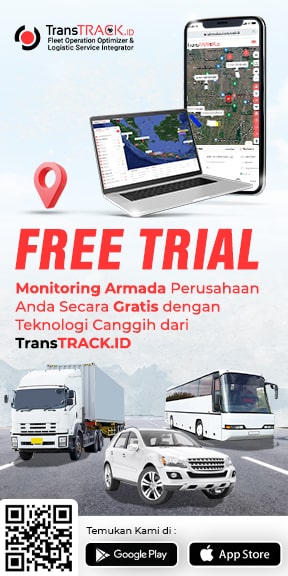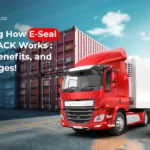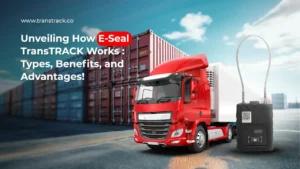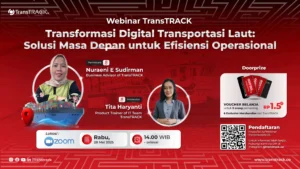Know the 6 Differences between FCL and LCL in Logistics!
Posted on November 21, 2023 by Nur Wachda Mihmidati

LCL and FCL is difference. In the world of ocean freight forwarding, every decision is a choice that requires careful consideration. Between the FCL (Full Container Load) and LCL (Less than Container Load) options, we enter the realm of logistical complexity that determines the course of goods from departure to destination.
FCL, which represents an entire container for shipment, and LCL, which summarizes the load of a number of shippers in a single container, each have their own characteristics. In this article TransTRACK, we will explore the fundamental differences between FCL and LCL, highlighting their impact on delivery time, cost, and security.
Let us understand the essence of each of these logistics choices, as we delve into the complexities hidden behind these simple yet crucial decisions in managing global supply chains.
FCL and LCL Difference
FCL (Full Container Load) and LCL (Less than Container Load) are two types of ocean freight shipping that have differences in several aspects. Here are FCL and LCL difference for each of the criteria you mentioned:
FCL and LCL Difference: 1. Transit Time
- FCL: Usually has a faster transit time as full containers are shipped directly to the destination without the need to stop at additional ports to fill or unload.
- LCL: Requires longer transit time as it needs to collect and consolidate loads from different shippers at the same port before shipping.
FCL and LCL Difference: 2. Shipping Cost
- FCL: Generally cheaper per unit volume than LCL, especially if the shipment volume is large and can fill a full container.
- LCL: More expensive per unit volume as there are additional costs for consolidation, handling, and distribution of goods at the port.
FCL and LCL Difference: 3. Risk of Goods
- FCL: Lower risk of damage or loss as goods are packed in a single container and not mixed with goods from other shippers.
- LCL: The risk of damage or loss is higher as goods from multiple shippers are in one container, and handling is more frequent during the consolidation and deconsolidation process.
FCL and LCL Difference: 4. Shipping Volumes Used
- FCL: Suitable for large volume shipments that can fill one or more full containers.
- LCL: Suitable for shipments with insufficient volume to fill a full container.
FCL and LCL Difference: 5. Logistics Goods Security
- FCL: Can provide a higher level of security as containers are filled and sealed before shipping, reducing the risk of theft or manipulation.
- LCL: Has a higher security risk due to more handling processes at the port, and goods from different shippers are stored together in one container.
FCL and LCL Difference: 6. Purpose of Shipment
- FCL: Used when a shipper has a large enough volume of goods to fill one or more full containers and wants to ship their goods directly to their destination without the need to consolidate.
- LCL: Selected when the shipment volume is insufficient to fill a full container, or when the shipper wants to save on shipping costs for smaller volumes.
The choice between FCL and LCL depends on the specific needs and characteristics of the shipment.
Between FCL and LCL, Which is the Best?
The choice between FCL (Full Container Load) and LCL (Less than Container Load) depends on the specific needs and characteristics of the shipment. Here are some considerations to help you determine which one is more suitable:
Shipping Volume
- FCL: Ideal if you have a large enough volume of goods to fill one or more full containers. FCL is usually more economical for bulk shipments.
- LCL: Suitable when the shipment volume is insufficient to fill a full container. LCL can be more efficient for small or medium-sized shipments.
Shipping Cost
- FCL: Generally more economical per unit volume if you have sufficient volume to fill a full container. Surcharges for FCL shipments may be lower compared to LCL for bulk shipments.
- LCL: Although the cost per unit of volume is higher, LCL can be a more economical option for small volume shipments or if you don’t have enough goods to fill a full container.
Transit Time
- FCL: Usually has a faster transit time as containers are shipped directly to the destination without the need for consolidation or deconsolidation at additional ports.
- LCL: Requires longer transit time as it takes time to collect and consolidate goods from various shippers at the same port before shipping.
Security of Goods
- FCL: Offers a higher level of security as containers are filled and sealed before shipping, reducing the risk of damage or loss.
- LCL: Has higher security risks as goods from different shippers are stored together in one container, and there is more handling of goods at the port.
Destination of Shipment
- FCL: Suitable for direct shipments without the need to consolidate at transit ports. Ideal for shipping destinations that require speed and efficiency.
- LCL: Useful if the shipment involves transit ports and consolidation of goods from various sources before shipping to the final destination.
It is important to evaluate your specific needs and shipping budget before deciding between FCL and LCL. Sometimes, using a combination of both (such as FCL for the main part of the shipment and LCL for the additional volume) can be the optimal strategy for some shipping scenarios.
As we understand the differences between FCL and LCL in ocean shipping, one thing is certain: shipping decisions are the cornerstone of success. In the face of this choice, there needs to be a thoughtful move that combines efficiency, safety, and timeliness.
TransTRACK, as a Logistic Service Integrator, offers more than just shipping. They are a partner who is here to make every step of your goods’ journey easier. High levels of security, real-time monitoring, and integrated solutions make TransTRACK the inevitable choice to achieve logistical success.
So, let’s step up with TransTRACK, unleashing the full potential of every cargo you ship. Your trust is our responsibility, and together, we will realize seamless delivery.
Recent Post
Topic :
 Bahasa Indonesia
Bahasa Indonesia









